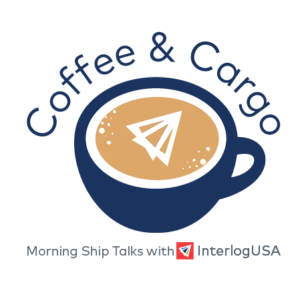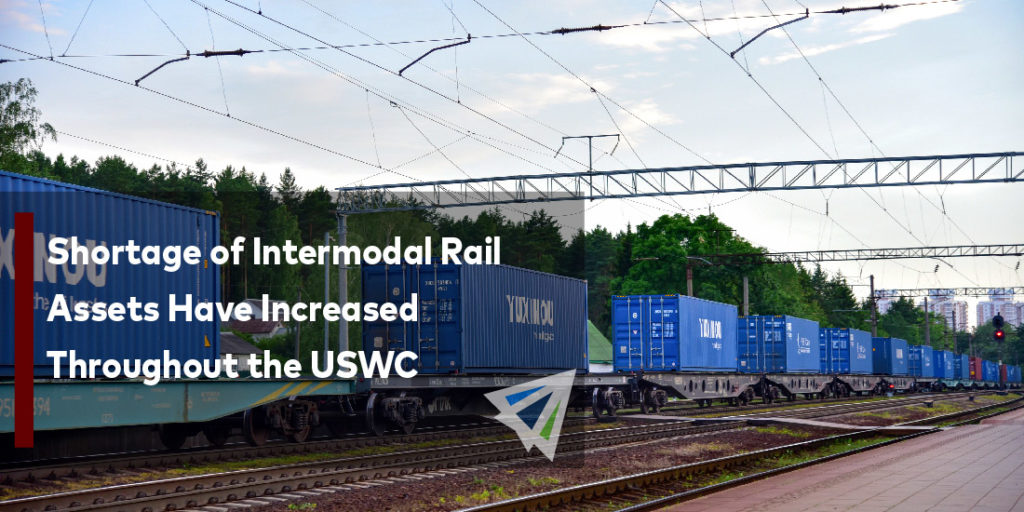Competitive Edge
April 13th, 2022
Stay Current with Interlog’s Weekly Newsletter:
Sign up for our next Coffee & Cargo webinar –> CLICK HERE
To watch last month’s webinar –-> CLICK HERE
Any topics you want discussed in the webinar? –-> EMAIL US TODAY
Ocean Freight Market Update
Headlines
- According to the American Journal of Transportation, May 12 has been flagged as the date when negotiations between unions (representing dockworkers for USWC ports) and ocean carriers/port operators will start. The two parties will look to ink a new labor contract as the current one, expires July 1.
- Continued COVID-related lockdowns in the Chinese city of Kunshan, an important production center for electronics components, could severely squeeze the supply of laptops, mobile phones, TVs and automobiles, according to Freight Waves.
- Consideration of the “Container Dwell Fee” at the Port of Los Angeles and the Port of Long Beach will be delayed until April 15, port officials announced. We will continue to keep you updated should anything change.
UPDATE: Notable U.S./Canada Port Congestion as of 04/11/22
- Vancouver: 53 Backlogged Vessels
- Los Angeles/Long Beach: 46 Backlogged Vessels
- Houston: 40 Backlogged Vessels
- Norfolk/Newport News: 37 Backlogged Vessels
- New York/Newark: 33 Backlogged Vessels
- San Francisco/Oakland: 24 Backlogged Vessels
- Savannah: 18 Backlogged Vessels
- Charleston: 16 Backlogged Vessels
IMPORT: Asia to North America (TPEB)
Recent Developments:
- MSC announced it has temporarily omitted Charleston calls on its U.S. to Southeast Asia String 1 service. The carrier reasons its decision in wake of increased waiting times for vessel berthing that have led to deteriorating schedule reliability and delays.
- Despite the easing of COVID-related lockdown restrictions announced for some Shanghai districts, disruptions for suppliers and port operations at the Port of Shanghai are expected to continue.
- No changes to bookings or blank sailings from carriers yet, however shippers should be prepared for possibilities given the present circumstances.
- The usual suspects—severe congestion, deteriorating schedule integrity, port omissions, and blank sailings—remain contributors to an uncertain market.
- The market has softened, given the usual lapses in post-CNY demand, however, it remains uncertain among forecasts for how long this softening is expected to last.
Rates: Rate levels remain elevated. Premium market remains strong. MSC issued GRIs, effective April 1, from New Zealand/Australia/India origins to U.S destinations.
Space: Space remains critical and is expected to stay tight. Some carriers have freed up FAK space to the USWC.
Capacity/Equipment: Capacity remains severely under. Equipment deficits remain critical.
TIPS: Book at least 4 weeks prior to CRD. Strongly consider premium service and be flexible as it comes to equipment and routing. Additionally, be in contact with suppliers to check up on any COVID-related developments that can affect production.
IMPORT: Europe to North America (TAWB)
Recent Developments:
- USEC congestion remains pronounced. New York/Newark, Savannah, Charleston, and Norfolk/Newport News all have notable backlogs of vessels.
- USWC ports remain significantly congested as well. However, wait times for vessels have cut down to 20-25 days at Los Angeles/Long Beach ports.
- Rail and intermodal systems are stressed as high demand continues.
Rates: Rates levels remain high and are expected to increase during Q2 with GRIs and PSSs.
Space: Space is critical for USEC and USWC.
Capacity/Equipment: Capacity remains tight for both North Europe and Mediterranean services. Equipment availability at ports, however shortages are still being reported at European inland terminals.
TIPS: Book 5 or more weeks prior to CRD. Strongly consider premium service for better reliability and no-roll options for your cargo.
EXPORT: North America to Asia
Recent Developments:
- Diminishing schedule integrity is contributing to void sailings, delays, vessel cut-offs at ports, and challenging post earliest return dates.
- For USEC, Port of Savannah is continuing to enjoy steady improvements to its operations.
- The Port of Charleston remains congested and at risk for omissions.
- Vessel arrivals remain fluid for USWC POLs.
Rates: GRI activity (limited) announced into April and early May.
Capacity: Available capacity remains fluid for USWC POLs.
Equipment: IPI origins remain adversely affected by deficits on containers and chassis. Primarily, a lack of rail equipment has become a predicament for the USWC.
TIPS: Book 4 to 6 weeks prior to CRD to secure equipment and vessel space
Did You Know:
The Evergreen containership, Ever Forward, has begun to take containers off the ship as the vessel remains aground in the Chesapeake Bay.
This comes after days of dredging and two failed attempts to pull the vessel free.
Source: Maritime-Executive
Freight News
Shanghai Ports have run out of space for refrigerated containers
Some container and vessel lines are redirecting reefer shipments at Shanghai, due to the worsening of congestion at the port because of the current COVID lockdown in Shanghai. Trucking capacity has been severely limited, as well as many warehouses still being closed, with both impacting yard capacity at Shanghai – especially for reefer containers, Sea-Trade Maritime News reports.
Truck drivers are required to hold a negative PCR test that has to be taken in the last 48 hours, a printed road permit, full itinerary, and delivery destination – all of these are reasons for availability issues and increasing turnaround times. Over 90% of trucks that are involved in import and export deliveries, have been out of actions because of these restrictions Freightwaves reports.
CMA, CGM, Hapag-Lloyd, MSC, and Ocean Network Express (ONE) announced that any customers who have reefer containers may be redirected to other ports. In addition, Maersk is omitting Shanghai calls on some services. “The port will not be accepting reefer and dangerous goods’ containers, they will be discharged in previous ports before arriving to Shanghai,” Hapag-Lloyd said in a note to customers, Sea-Trade Maritime News reports.
Other important information to be aware of:
At the Shanghai marine terminals, import dwell times for containers have increased to 8 days (nearly 75%) since the lockdowns first began a few weeks ago, Freightwaves reports.
While many have been diverting shipments to Ningbo or other alternatives, cities outside Shanghai are also experiencing a great amount of congestion.
Union Pacific has reduced container surcharge fees in Seattle and Oakland
Union Pacific Railroad has announced the reduction of surcharges due to more rail-owned 53 foot containers becoming available, the Journal of Commerce reports. The fees will drop to $500 per container for small shippers (down from $3,000) and $250 per container for large shippers (down from $2,500) effective April 10th.
The surcharge is applied for all spot market business and any contract loads that go beyond their weekly allocation. For example, if a shipper has a contract to send out 50 containers per week, the surcharge is imposed on any box that is above that number, the JOC reports.
The difference between a small shipper versus a large shipper really depends on the market. In some locations the threshold is 250 loads per year, however in others it’s 500 loads, the JOC reports.
Union Pacific said in a statement that even though chassis continues to remain a strained asset because of the increased turn times, UP has sufficient [rail-owned] containers on chassis at the terminals where they have reduced the surcharges, the JOC reports.
Sign Up for April's Webinar:

Wednesday April 20th, at 10am central time zone we will be having our monthly webinar.
We will discuss market updates, the hot topics in the industry, current events, and a Q&A with our experts!
Sign up for our
industry answers
Our team works to provide valuable, unique, and relevant content to assist you in finding solutions. Sign up now.
